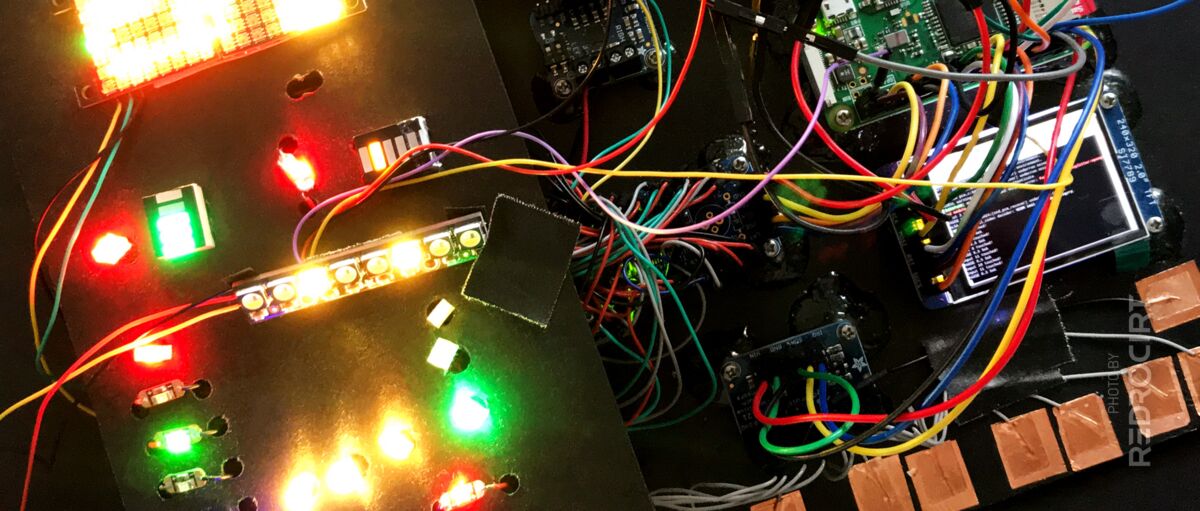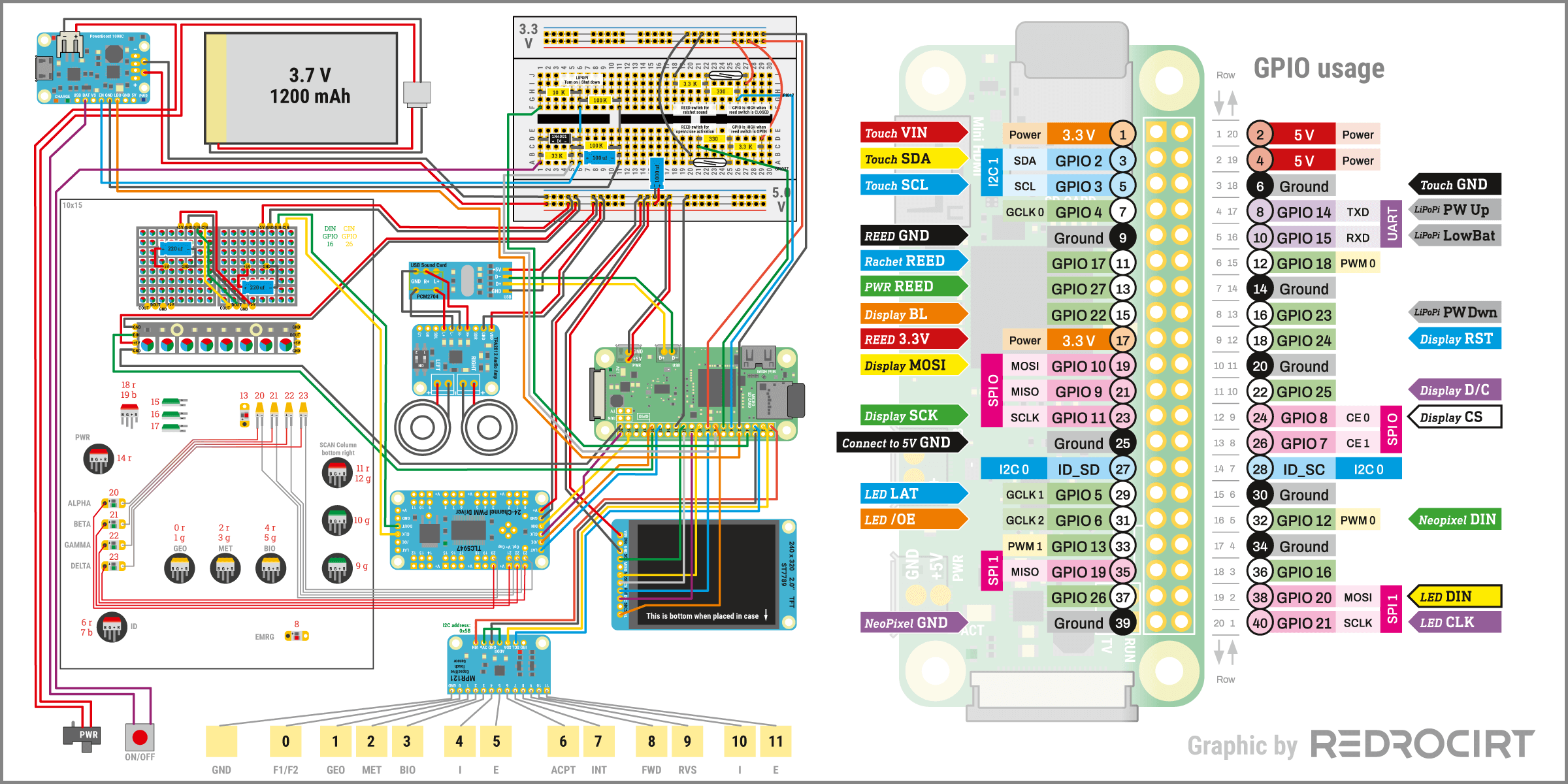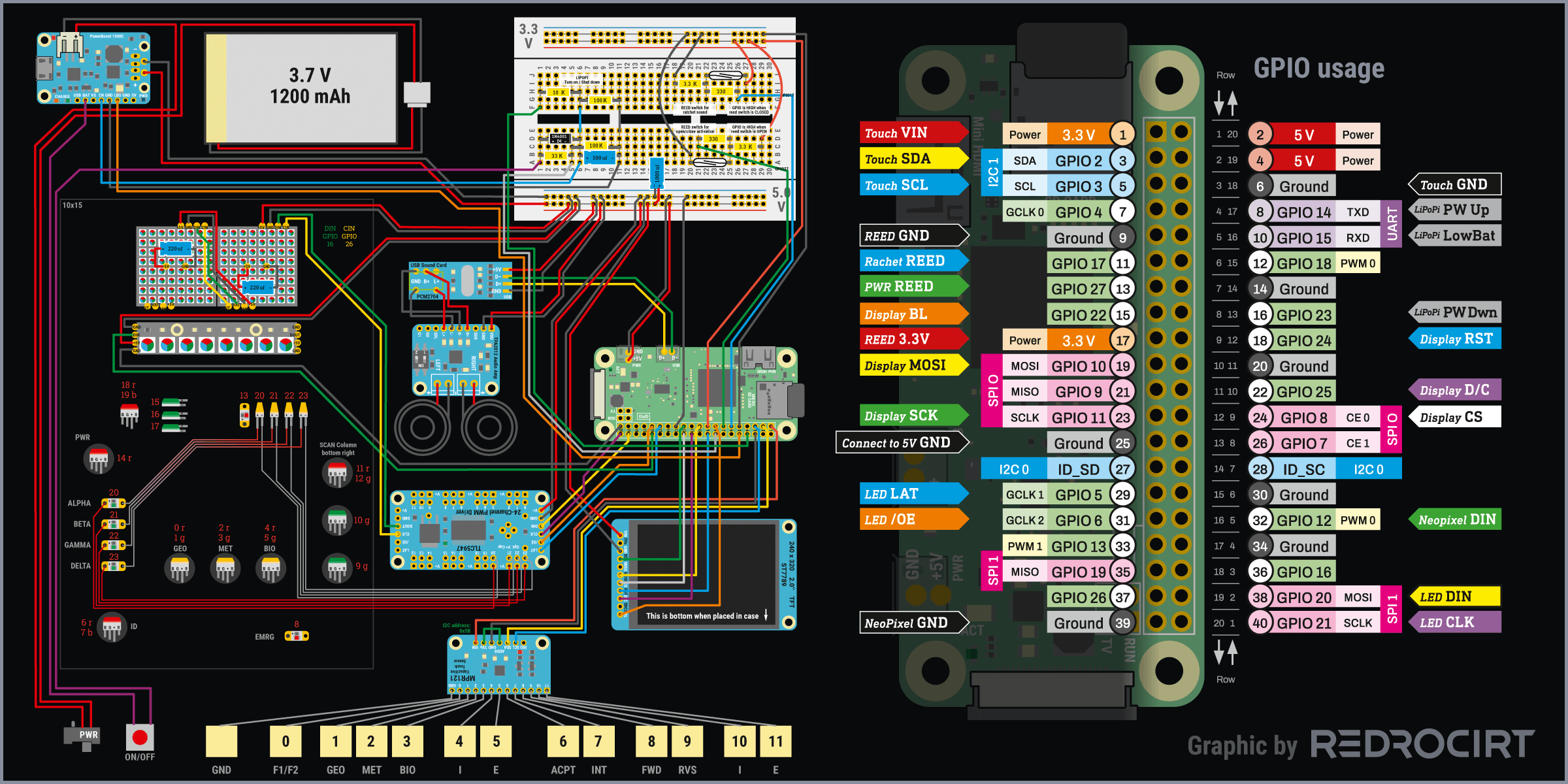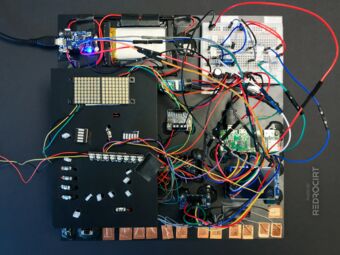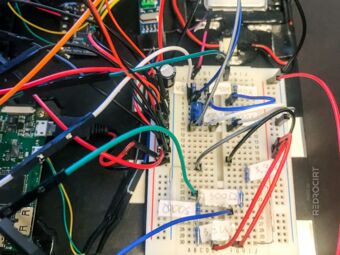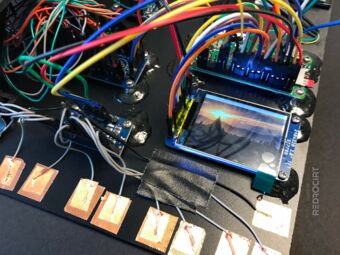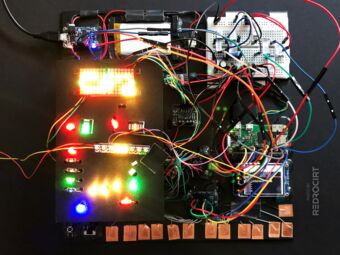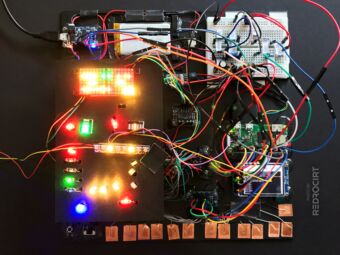Disclaimer: I am not an expert in electronics or programming. That's the way I did it, and that's not necessarily the correct way to do it.
I have revised the drawing of my test board schematic several times in the last weeks and integrated the new components. I added the USB sound card with the TPA2012 Audio Amp, the series connection of the TLC5947 LED board with the DotStar Matrix panels, and the NeoPixel stick. To maintain a compact form factor and make the parts more accessible, I rearranged all the parts.
Note: It's recommended to use a logic level shifter like 74AHCT125 to boost Raspi's 3.3V GPIO data signals to 5V for modules that are also connected directly to the 5V power line. I didn't use a logic level shifter, but I should have (it worked without, but not reliably). Use a logic level shifter!
I also changed some of the LED connections on the TLC5947 and integrated the splitted 10 segment LED light bar graphs in series with the Alpha-to-Gamma lights. This setup will change again soon, as I will be replacing the Sequin LEDs and some of the rectangular RGB LEDs with NeoPixel Buttons as they become available. But for now, I was happy with the circuit and ended up taking apart my first test board and building a completely new test board:
And here it is in action:
Currently used components and connections
Section titled Currently used components and connections- 3.7V LiPo with 1200 mAh (I already noticed some power problems, might need a larger battery)
- PowerBoost 1000C is boosting 3,7V to 5V (and charging the LiPo via micro USB)
- Physical power switch to completely disconnect the battery from the PowerBoost
- LiPoPi circuit (left side of the breadboard) with a push button to power up or shut down the Raspi
- Raspberry Pi Zero (1st Gen.) with micro SD card
- USB sound card (PCM2704) connected to Raspi's USB test pins on the back
- TPA2012 Audio Amp connected to the headphone jack of the USB sound card
- One speaker connected to the TPA 2012 Audio Amp (later there will be 2 for stereo sound)
- One MPR121 12-channel capacitive touch module, connected via I2C
- ST7789 320x240 SPI TFT display, connected via SPI0
- TLC5947 24-Channel LED controller, connected via SPI1
- Different types of LEDs (Sequins, rectangular RGB and segmented bars) connected to TLC5947
- Two DotStar 8×8 matrix boards, connected in series to TLC5947 (via SPI1)
- One RGBW NeoPixel stick, connected via GPIO12 (PWM0) - will later be extended with more NeoPixels
- Because of the many LEDs used, I also added a 1000 uf capacitor to the 5V line
- Two reed switch circuits (right side of the breadboard) to detect the status of the door

